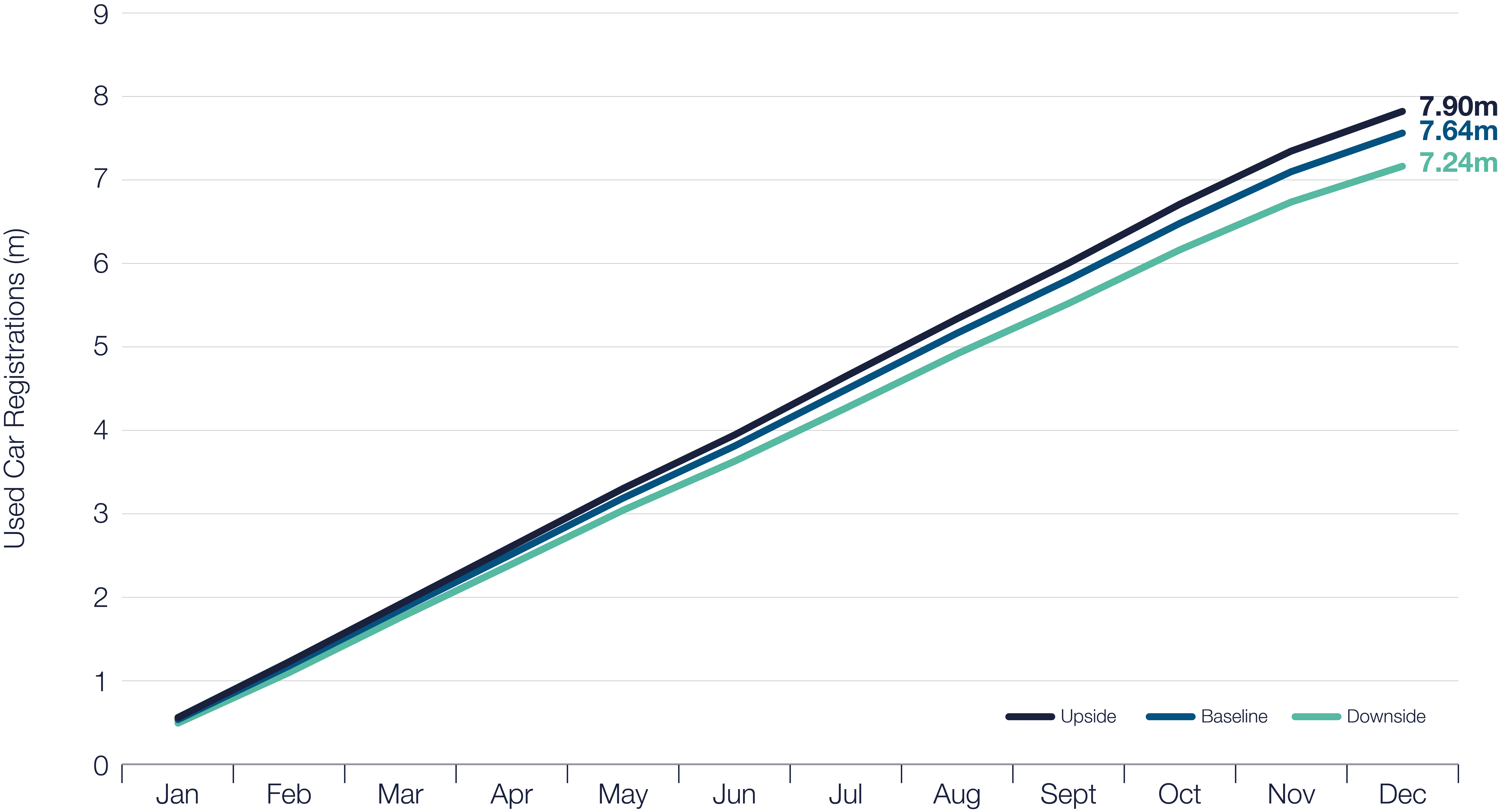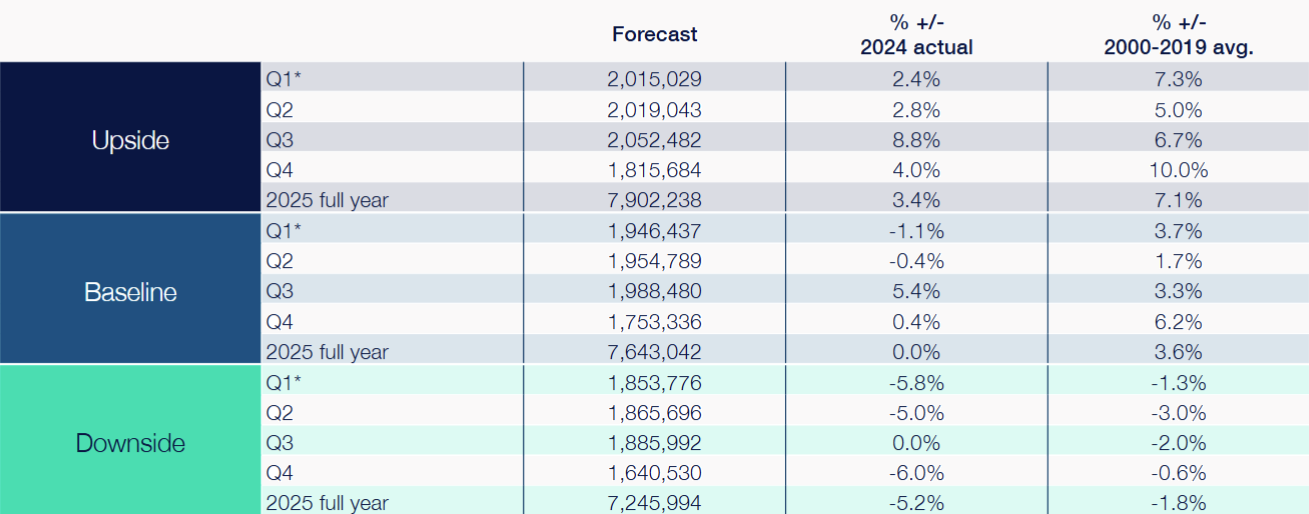6 min read
Every quarter, we combine our proprietary market insights with the latest used vehicle data to create three scenarios which forecast the industry’s performance for the next 12 months. These include an upside, baseline and downside scenario, each reflecting different macroeconomic, policy and industry conditions that could shape the remainder of the year. Together, these scenarios provide a structured framework to help stakeholders plan for the possibilities that may unfold in the year ahead.
2025 is forecast to see the used market return to its natural rhythm. Our baseline scenario forecasts that the used car market will reach 7.64 million used car transactions in 2025. This represents a flat year-on-year outcome but is still 3.6% above the UK’s 2001-2019 average.
Used Car Transaction Forecast 2025

Source: Cox Automotive
Used Car Transaction Forecast

*Actuals
Upside scenario
Taking an optimistic view, our upside scenario sees the UK economy outperform expectations for the remainder of the year, with improved macroeconomic conditions and a faster-than-anticipated oil price recovery. These dynamics contribute to renewed consumer confidence and stronger market momentum. The demand for used cars slowly tracks rising supply as the sector benefits from favourable trading conditions.
The key factors that influence this scenario are:
- Retailers quickly adjust to the evolving mix of stock entering the market, including a growing volume of electric vehicles (EVs), as part exchange activity increases and fleet trends normalise. Anticipating shifting consumer preferences, dealers refine their inventory to reflect a rising interest in EVs, particularly as price points improve.
- Depreciation rates stabilise across key segments, reinforcing pricing consistency and boosting market confidence. The lasting effects of supply chain disruptions diminish, allowing for smoother wholesale and retail operations.
- Combined, these conditions create a buoyant outlook for the used car market, driving strong conversion rates, healthy margins and greater opportunities for independent and franchised retailers.
Baseline scenario
The baseline scenario illustrates the most likely outcome for the used market in 2025, as it enters a period of measured recovery, supported by moderate economic growth and controlled inflation. Consumer spending sees a marginal uplift, helping to support greater retail activity.
The key factors that influence this scenario are:
- In the first half of the year, the market continues to experience limited supply, particularly of quality three to five-year-old vehicles. As fleet renewals and part exchange volumes slowly recover, stock levels improve in the second half of the year. This shift helps to rebalance the availability of desirable used stock.
- Regulatory complexity, rising operational costs and tax burdens continue to pose a challenge to the UK’s dealerships. Mid-sized operators face ongoing consolidation pressure, while larger dealer groups enjoy greater resilience, mostly due to the economies of scale and international investment.
- Despite these challenges, the market benefits from incremental vehicle availability, a gradual easing of inflation and sustained - yet cautious - consumer demand. Together, these factors combine to deliver moderate growth for the sector.
Downside scenario
Our downside scenario sees the UK used car market face a challenging year, as economic recovery stalls and inflationary pressures persist. Slower-than-expected interest rate cuts suppress consumer confidence and spending, bringing a broader sense of uncertainty to the retail sector. As demand weakens, the sector tips into oversupply, triggering sharper-than-usual depreciation.
The key factors that influence this scenario are:
- An imbalance in the electric vehicle (EV) segment, where supply outpaces demand and depreciation accelerates, places further strain on residual values and makes margin retention increasingly difficult. Despite growing stock levels, the lack of targeted government support keeps used EVs out of consumer consideration.
- Broader fiscal policy decisions restrict household and business spending, while operational cost pressures intensify for retailers. Combined, these factors result in contracting sales volumes and reduced profitability.
- Overall, this scenario paints a subdued outlook for the market, with limited opportunity. Businesses are faced with an increasingly challenging trading environment and must make difficult decisions to survive within it.
Cox Automotive Used Car Transaction Forecast vs Actuals

Reviewing our forecasts against the total used vehicles registered, our baseline forecast was 96% accurate.






